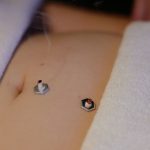Phase One – The Menstrual Flow
By Annalise Drok Going With The Flow
Going With The Flow
The menstrual flow speaks volumes about the state of our reproductive health. It is a concept that is simple to grasp, in fact you would think it was almost an unnecessary statement, however it is something we vary rarely stop to think about. It varies wildly from woman to woman, and so too do ideas of what is normal.
However, whether it’s a non-event or a debilitating monthly occurrence, the state of the flow gives us an indication of what your fertile health is like.
Ideally we are looking for a period that is something like this:
- The flow starts during the night of the 27th day, or the morning of the 28th day (although a cycle between 26 and 30 days is considered normal, providing it is regular).
- The menstrual blood starts fresh red (the same as if you had cut your hand and were bleeding) at a moderate flow (needing to change a light sanitary napkin/tampon every 4 hours).
- The flow continues to get heavier until a regular sanitary napkin/ tampon needs to be changed approximately every 3 hours.
- The heavy flow is present for 1-2 days then tapers off and finishes cleanly, still fresh red in colour on day 4 or 5.
Clots, pain, bloating, mood changes, sore breasts, changes in bowl movements, headaches or fatigue before, during or after could be considered normal due to the fact that many people have them, but these symptoms are not ideal for optimum menstrual health.
Any deviation from the ideal will show us where we need to focus our attention. For example, if there are large clots and/or pain, the endometrial lining is unlikely to be smooth, potentially causing implantation issues if you are trying to conceive. A very light flow can indicate that the lining is too thin, again potentially causing implantation issues; while an extremely heavy flow can indicate a structural problem (eg fibroids) or an energetic imbalance.
During the period, there is a natural tendency to withdraw and take it easy. Pain and emotions aside, it is the perfect time to sit and meditate, reflecting on the month that has past. Take a break from your usual exercise routine and do some gentle yoga. Sakshin Ghatastha and Iyengar yoga both have a lovely menstrual sequence. It involves sitting on the floor in gentle forward bends and back bends, encouraging the body to open and allowing the blood to flow. Getting into nature with a slow walk through a park, by the creek or ocean can do wonders too. Just remember to stay warm! Cold naturally constricts and can cause a world of pain.
In Chinese Medicine there is a great analogy comparing the endometrium to being like a garden bed. We need to nurture the soil, ensuring that it is rich and fertile, balanced in its nutrients. Diet, plus our wonderful Chinese herbs and acupuncture, are the best way to achieve this.
At the beginning of the menstrual flow it is important to encourage the blood to flow. This is where light exercise and acupuncture can be really beneficial.
Eggplant, turmeric, spring onions, leeks and crab are all examples of blood moving foods.
As the blood flow starts to taper off its important to start replenishing blood and fluids. Organic red meat and soups made from bone stock are the most efficient way to do this. Slow cooked meals such as osso bucco, lamb shanks and stews are the best option as the meat is easy to digest and the nutrients are “locked into” the sauce. Here is a link to an aubergine and lamb recipe by Jamie Oliver, perfect for both nourishing and moving blood.
In addition, here is a link to Sarah Wilson’s recipe for “Bone Broth”. It comes with a long list of why it’s so good for you and a clear and easy “how to”. If you want to go a little more hard-core Chinese Medicine with this we’d be happy to give you some blood moving and nourishing herbs to put in towards the end of the cooking process, just to give the whole thing even more oomph!
If you’re not so big on the whole meat thing, then it is even more important to be aware of replenishing your blood energy. Beetroot is the king vegetable with which to do this. Tempeh, kidney beans, eggs and seaweeds are also considered good blood nourishing foods, as are any fruits or vegetables that are good sources of iron. Here is a link to Maggie Beer’s wonderful Beetroot Risotto. She has a bit of bacon in the recipe, but it’s easy to leave out if you want. I love to serve it with some Meredith’s Goats Cheese and a side of sautéed silver beet.
Regardless of whether you are trying to conceive or not, having an awareness of your cycle, embracing the monthly flow and looking after your menstrual health will serve you well for years to come – and by this I mean menopause, but that’s for another post!





